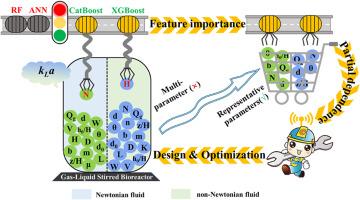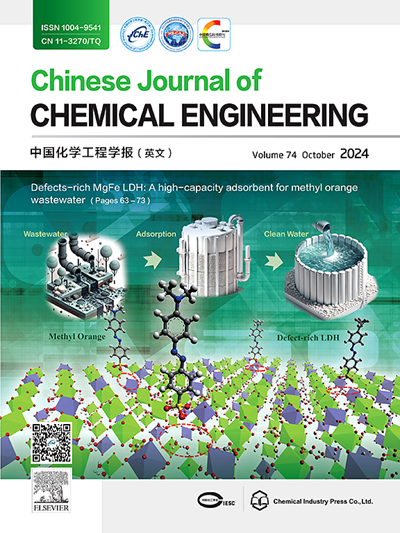Prediction of mass transfer performance in gas-liquid stirred bioreactor using machine learning
IF 3.7
3区 工程技术
Q2 ENGINEERING, CHEMICAL
引用次数: 0
Abstract
The structural and operational optimization of gas-liquid stirred bioreactors presents both complexity and critical importance for enhancing mass transfer performance. This study proposes a machine learning (ML)-driven approach to identify key features and predict the volumetric mass transfer coefficient (kLa). Four ML models were adopted and compared for kLa prediction in Newtonian and non-Newtonian fluids by evaluative indices, with CatBoost and XGBoost emerging as the optimal models, respectively. Specifically, it is demonstrated that Catboost has higher prediction accuracy (AARD = 18.84%) than empirical equations by effectively incorporating multidimensional features (structural, impeller, and operational), while simultaneously extending applicability to diverse Newtonian fluids. For non-Newtonian fluids, XGBoost outperforms empirical equations by effectively incorporating fluid rheological parameters (consistency coefficient, power-law index), thereby better capturing shear-thinning behavior. Feature importance analysis further identified rotational speed (for Newtonian fluids) and liquid height (for non-Newtonian fluids) as the key features, while 2D partial dependence analysis establishes quantitative optimization ranges. This ML approach provides an efficient predictive tool for gas-liquid stirred bioreactor design and optimization.

用机器学习预测气液搅拌生物反应器的传质性能
气液搅拌生物反应器的结构和操作优化既复杂又重要,对提高传质性能至关重要。本研究提出了一种机器学习(ML)驱动的方法来识别关键特征并预测体积传质系数(kLa)。采用4种ML模型,通过评价指标对牛顿流体和非牛顿流体中kLa的预测进行比较,CatBoost和XGBoost分别被评为最优模型。具体而言,通过有效地结合多维特征(结构、叶轮和操作),Catboost具有比经验方程更高的预测精度(AARD = 18.84%),同时扩展了对各种牛顿流体的适用性。对于非牛顿流体,XGBoost通过有效地结合流体流变参数(一致性系数、幂律指数),从而更好地捕捉剪切变薄行为,从而优于经验方程。特征重要性分析进一步确定了转速(适用于牛顿流体)和液高(适用于非牛顿流体)为关键特征,二维偏相关分析建立了定量优化范围。这种机器学习方法为气液搅拌生物反应器的设计和优化提供了一种有效的预测工具。
本文章由计算机程序翻译,如有差异,请以英文原文为准。
求助全文
约1分钟内获得全文
求助全文
来源期刊

Chinese Journal of Chemical Engineering
工程技术-工程:化工
CiteScore
6.60
自引率
5.30%
发文量
4309
审稿时长
31 days
期刊介绍:
The Chinese Journal of Chemical Engineering (Monthly, started in 1982) is the official journal of the Chemical Industry and Engineering Society of China and published by the Chemical Industry Press Co. Ltd. The aim of the journal is to develop the international exchange of scientific and technical information in the field of chemical engineering. It publishes original research papers that cover the major advancements and achievements in chemical engineering in China as well as some articles from overseas contributors.
The topics of journal include chemical engineering, chemical technology, biochemical engineering, energy and environmental engineering and other relevant fields. Papers are published on the basis of their relevance to theoretical research, practical application or potential uses in the industry as Research Papers, Communications, Reviews and Perspectives. Prominent domestic and overseas chemical experts and scholars have been invited to form an International Advisory Board and the Editorial Committee. It enjoys recognition among Chinese academia and industry as a reliable source of information of what is going on in chemical engineering research, both domestic and abroad.
 求助内容:
求助内容: 应助结果提醒方式:
应助结果提醒方式:


